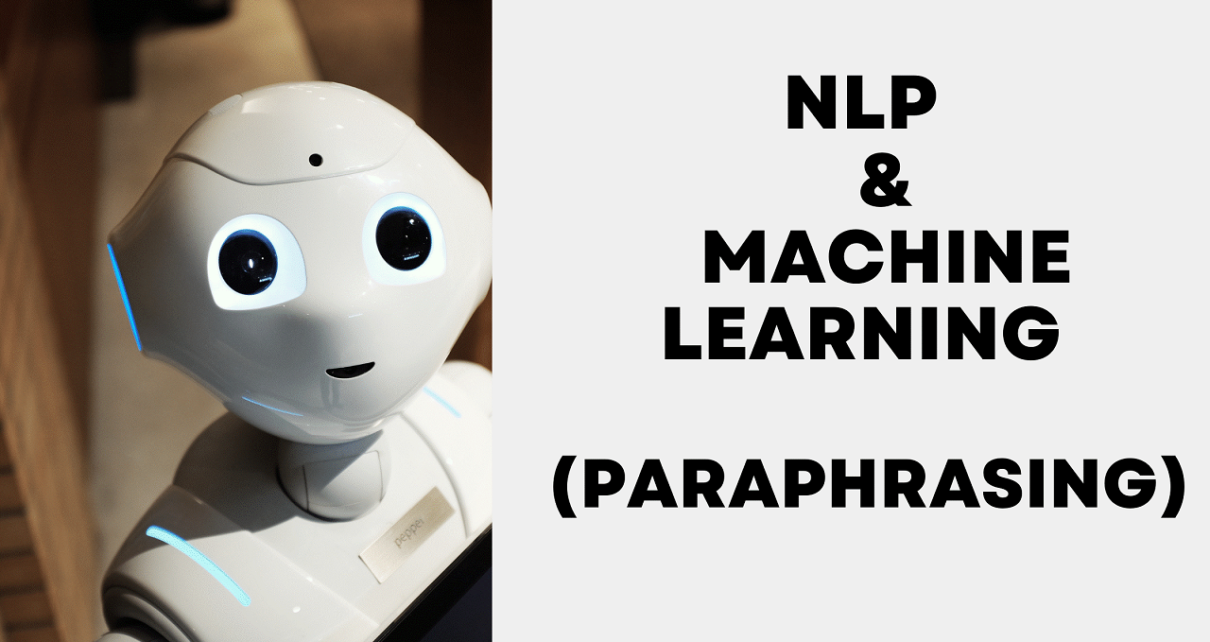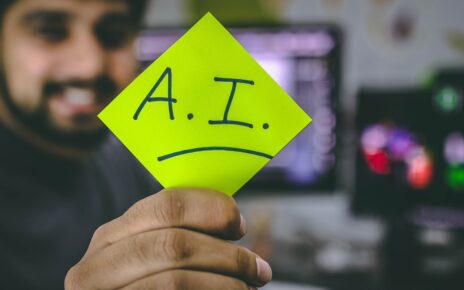A paraphrasing tool is a necessary requirement for writers today. So, how does it all work?
The making of a paraphrasing tool requires many ingredients. While you can guess most of it is about Artificial Intelligence, other AI-based elements come into play as well.
Since the job of a paraphrasing tool is to change content rather than recreate it, it needs to employ a very specific and thorough approach. That’s why they are significantly assisting in improving the overall writing process.
So, where does it begin? It begins with NLP, then it relies on machine learning. On top of all that, it’s tied together with the help of the Python programming language. So, to understand just how these three pillars of a Paraphrasing tool work, let’s dig in:
Contents
What Is NLP?

NLP is a branch of computer science and one of the leading aspects of deep learning. Shortened from Natural Processing language, it automatically influences the natural language with the help of AI. Then, it converts it into binary code for the machine to read and understand.
While NLP has been around for half a century, it has made new leaps in the past few years. The primary operation of NLP in today’s world can be found in a technology everyone uses, i.e., mobile phone devices. Don’t believe us? Just fire up text to speech next time.
Moreover, NLP is everywhere and helps us with many aspects of everyday life. In other words, everything that includes text has NLP in the background—operating it. Such as:
- Web pages
- Blogs
- Writing tools
- Grammar checkers
- Etc.
Every one of these aspects relies on NLP. Even as you type something on your phone or computer, the keystroke goes through an intricate NLP process before you see the final outcome, i.e., the letters on the screen.
What Is Machine Learning?

Machine learning is a significant branch of artificial intelligence. As you can guess by its name, it helps the machine understand human behavior, languages, gestures, etc. An example of this AI element would be predictive text or grammar correction.
Machine or deep learning has become one of the leading aspects of anything AI-related today. Since machine understands various aspects of human nature, they can help them execute tasks such as:
- Content creation or recreation
- Rewriting or paraphrasing
- Customized advertisements
Another example of this could be seen when you log into your Netflix or another streaming account next time. The personalized menus that you see, including the type of films or TV shows you like, then that’s machine learning at its best—since it understands what you like.
What Is Python?
Python is an object-oriented programming language. The dynamic foundation, such as its lively semantics, makes it an ideal code for applications dealing with data. The prime example of Python in today’s world would be any text editor.
Since the response time between a machine and a keystroke is significantly decreased with the help of Python, it’s the go-to language for developers. Why is that? Because of its light nature, it’s an ideal code to make applications with lots of data on the user’s end.
That’s why it’s the one developers use in programs such as paraphrasing tools, plagiarism checkers, or even grammar checkers.
The Role Of NLP & Machine Learning In A Paraphrasing Tool
The role of NLP in a paraphrasing tool is significant from the moment you see it work. From detecting phrases to changing them up, here are three major roles of NLP and machine learning in Paraphrasing Tools:
1. Detecting Phrases
The first and major step that any paraphrasing tool takes is detecting the content’s original state. They do it with the help of NLP, and then machine learning decides which is ideal for it. So, here’s what you see in a common paraphrasing tool:

When you paste content like this, it detects it for the original tone. Then, given the prompts below, i.e., the content tones, the machine begins to detect the original phrases with the help of NLP.
2. Converting It For The Machine
NLP then turns the content over to the machine once it translates the text for it. After that, machine learning kicks in and understands the key essentials present within the said content.
3. Generating New Phrases, Words, And Terms
Once the machine learns the key phrases, keywords, and terms inside a text, then it changes it up and switches it with alternatives, like this:

This is how machine learning indicates that it understood the initial assignment. First, it read the content, then grasped the similarities, and later changed it.
How NLP & Machine Learning Works In A Python-Based Paraphrasing Tool
Python-based paraphrasing tools are everywhere. However, to demonstrate the prowess of one, it’s imperative that we pick the best of the lot. So, we’re using Paraphrasingtool.ai, and here’s how NLP & machine learning are apparent in it:
1. Rewrites Content
The ability to rewrite the content of a paraphraser depends on its python background, NLP capabilities, and machine learning tactics. Here are three of them at full display:

If you compare it to the initial text, you can see the content has shifted just enough. The tool did it within a few seconds, indicating its python-based quick background. Then, NLP kicked in and turned changed content with the help of machine learning.
2. Grasps & Changes Content Tone
When you fire up a paraphrasing tool, in most cases, you will find the option for content tone changes like this:

As each one indicates its purpose, we’ll try “Near Human” since we already tried text improver. Here’s what we see next:

This is machine learning on full display, as it’s literally the same text. However, it has changed drastically in terms of content tone.
3. Finds & Removes Plagiarism
Finding and removing plagiarism is yet another NLP and machine learning element. Here’s how a python-based plagiarism checker finds it:

The content is all underlined in red, meaning it’s plagiarized. So, the paraphrasing tool offers a counter punch for it:

As seen here, the “Paraphrasing tool” setting has changed up content drastically. But does it avoid plagiarism?

Yes, it does, as the content is now in all-greens.
Conclusion
There’s your explanation, folks. The three main elements of a paraphrasing tool, i.e., NLP, Machine Learning, and Python, come together to rewrite content.




